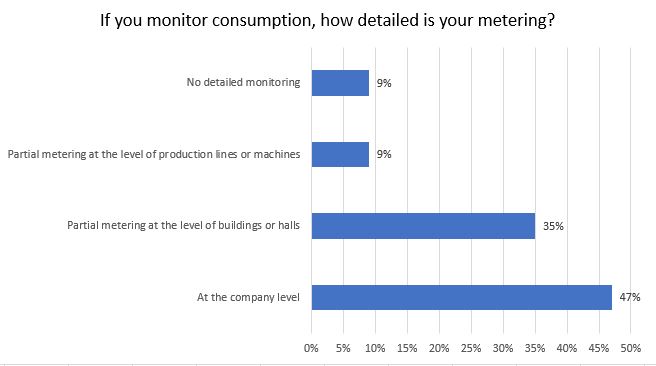Long holds on the line, slow responses on chat, unhelpful and unempathetic operators lacking the necessary knowledge – these are just a few of the major issues plaguing company contact centres today and causing headaches for customers. On top of that, inefficient communication and outdated technology add to the frustration. So, how can these issues be resolved to ensure contact centres truly serve their purpose and don’t lose customers? These are the questions for our business consultant Marcel Vejmelka.
Why should companies focus on enhancing customer experience?
Improving customer experience is not just a trend, it’s a key factor affecting a company’s long-term success. Data shows that around three-quarters of positive customer experiences lead to repeat purchases. On the other hand, 55% of consumers are willing to switch brands following a negative experience, even if they had been loyal before. Over 72% of them also prefer to communicate through their favourite channels, which nowadays includes phone calls, as well as digital channels like WhatsApp, Facebook Messenger, and others. Modern communication is becoming an essential part of interacting with customers, especially for younger generations.
How can technology reduce customer dissatisfaction from unresolved requests?
Technology plays a crucial role in improving customer experience and reducing consumer frustration. No one wants to repeatedly provide their identification details on a customer service call or deal with a useless bot. These issues should be resolved by Artificial Intelligence (AI) deployed in contact centres. AI should be programmed so that customers don’t have to repeat the same information unnecessarily, and it should only be used for cases where it makes sense.
It’s also important that contact centres offer various communication channels preferred by the people. For example, if young people primarily communicate through WhatsApp, this channel should be included in the contact centre’s offering. Another key element is technology that facilitates efficient communication between operators and the company’s back office. If an operator encounters a problem, they should be able to immediately ask an expert for help, providing real-time answers to the customer.
Can technology enhance operator effectiveness?
Operators in contact centres often face high stress and frustration due to a fragmented working environment and the psychological burden of dealing with frequently dissatisfied customers. Operators must juggle many different applications on their screens, constantly switching between them, which is not only inefficient but also highly stressful. The situation gets even worse when customers switch between communication channels, for example from chat to phone calls, and the operator doesn’t have access to the information previously communicated via another channel. This often extends the interaction and increases the risk of errors.
A well-chosen technology can solve these problems. Firstly, operators should have a balanced working environment integrating various communication channels – voice, chat, email – while allowing them to work from anywhere, including from home. Our solution enables operators to work from home or from the contact centre with the same working environment. All that’s required is an internet connection and a phone.
Another key requirement is that operators have access to all the information necessary for servicing customers in a single place.

What role does communication with the back-office play?
Communication between the operator and the company’s back office is another key element of a successful contact centre. This communication can be integrated into the operator’s working environment using tools like Microsoft Teams or Webex Communicator. For example, searching for relevant information can be made easier with the Agent Assist – an AI-powered tool that helps the operator during a call by listening in to the conversation, creating a real-time transcript, and offering relevant information and facts from the company’s knowledge base.
How should artificial intelligence be implemented?
It’s worth noting that poorly implemented AI can have the opposite effect and worsen rather than improve the situation. When utilising AI, we recommend the “universal harness” approach, which allows companies to use multiple AI systems as needed. This means a company can combine different technologies, such as IBM Watson, Google Dialogflow, or Microsoft Copilot, ensuring effective chatbot, voicebot, or analytics operations. AI implementation permeates the entire contact centre’s technology and should always reflect the specific needs of the company and its customers.
What do companies usually expect from AI implementation in contact centres?
Many companies still think that AI implementation is a simple process, where a bot is deployed, and it solves everything. However, this is a misconception. To effectively implement AI, it’s crucial to first understand in detail what AI is expected to do in the company. This requires close collaboration between the company and the vendor, who must be familiar with the business processes and specific customer communication needs. Only then can AI be implemented in a way that benefits both the company and its customers.
How can this be achieved? Is advanced programming knowledge required?
Many might think that implementing a modern contact centre requires complex programming. The communication platform should be easy to use. That’s why we use Webex Connect, a cloud-based Communications Platform as a Service (CPaaS) developed by Cisco. It’s a tool that allows companies to automate and improve communication with customers across various digital channels. It is positioned above the omnichannel, as it includes multiple functionalities.
Setting up rules on this platform is very intuitive, similar to creating algorithms using visual tools, where individual elements are pieced together. Therefore, no coding experience is required to set up the policies and operating and principles.
How does Webex Connect ensure security?
Security is extremely important, especially for financial institutions. Webex Connect fully complies with standard compliance requirements and encrypts all transmissions and handled content. To provide reliable and secure services, it must meet a range of security standards and regulations.
Which is better for a contact centre – an on-premise or cloud-based solution?
When choosing between on-premise and cloud-based solutions for contact centres, the decision largely depends on the specific needs of the company. Both options have their pros and cons, which should be carefully considered.
On-premise solutions are installed directly within the company, offering greater control over integration with corporate systems. This option may be more suitable for companies with specific security or operational requirements. On the other hand, cloud-based solutions offer lower upfront costs, easier maintenance, faster innovation cycles, and the ability to scale the system according to the company’s current needs – for example, from a small installation for a handful of operators to a system for hundreds of users. The cloud also allows for faster implementation of new features and technologies without the need for complex updates required for the on-premise solutions.
Companies often hesitate to transition to new technologies due to concerns that it might negatively impact their business-critical processes. However, cloud-based solutions offer a significant advantage, as they allow contact centres to be deployed as a service, with updates, security, and new features managed by an external provider, such as Cisco. Unlike on-premise solutions, where each new functionality or module requires more complex integration and additional IT resources, cloud-based solutions significantly reduce this burden.

Who are cloud contact centres suitable for?
Cloud-based solutions are ideal for companies with prior experience operating cloud services or applications. With these experiences, the transition to the cloud will not be anything new for the company, and they will be better prepared to enjoy the benefits of this model. Cloud is also the optimal choice for companies considering the deployment of AI, as AI technologies are much more efficient and easier to implement in the cloud. Another key factor is the speed of the innovation cycle– companies looking to respond quickly to market changes and add new communication channels based on customer demands will appreciate the flexibility of cloud solutions.
What do companies expect from a cloud-based contact centre?
Many companies, especially large organisations such as banks, operate different systems for different business purposes. These systems often include transaction notifications, payment management, or contract handling. Companies expect new communication platforms, like Webex Connect, to integrate and unify communication across these systems, without the need to create separate communication channels for each one. Cloud-based solutions like Webex Connect act as intermediaries between business systems and customers, simplifying communication management and enabling rapid adaptation to new trends.
Currently, there are as many as 16 different digital communication channels, ranging from SMS to modern platforms like Instagram, which can all be integrated into a single contact centre. This integration allows not only for the sending of text messages, but also the transfer of data, videos, or forms, which significantly enhances the customer experience. So why not take advantage of it?
What role does the system integrator play in contact centre deployment?
A crucial one. When deploying a complex system such as Webex Connect, the integrator not only ensures the technical implementation, but also provides consultation on business processes. Successful deployment requires a deep understanding of the organisation’s needs and those of its customers. Often, these are critical systems that must be highly reliable and secure. The integrator is responsible for creating a unified communication environment that enhances customer service while ensuring compliance with the company’s security requirements. Only then it is possible to integrate a functional, reliable, and customer-focused contact centre that will ultimately be loved by the customers.


















